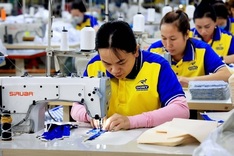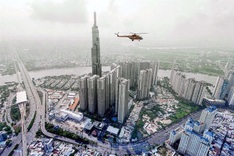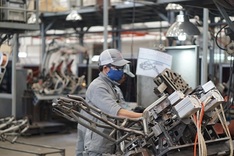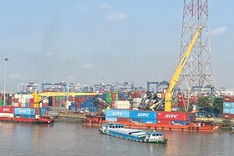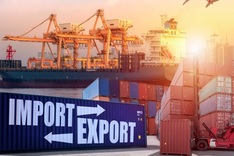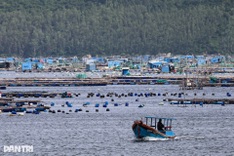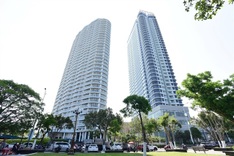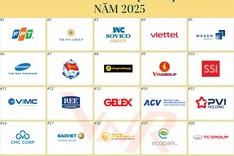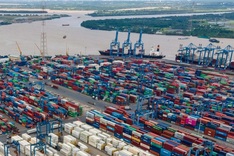At January's World Economic Forum in Davos, Switzerland, Dan Brutto, UPS international division president, got a private meeting with the prime minister of Vietnam. UPS had been negotiating to buy part of a Vietnamese government-owned express carrier, but the negotiations weren’t final yet.
UPS had been negotiating to buy part of a Vietnamese government-owned express carrier, but the negotiations weren’t final yet.
That 10-minute meeting closed the deal.
“Amazingly a week after that, all the paperwork was signed,” Brutto said. “[The prime minister] said it made sense to have a world-renowned company liked UPS to own part of P&T [Express].”
What UPS received was a joint stock agreement to own 49 percent of P&T Express, a subsidiary of VNPT, the largest state-owned post and telecommunications company in Vietnam.
The deal enabled UPS to paint local delivery trucks in its signature brown, make deliveries to 63 Vietnamese provinces and invest in Vietnamese facilities.
The deal is crucial because Vietnam acceptance in the World Trade Organization in 2012 would loosen ownership rules for foreign entities, and UPS immediately could buy the remaining 51 percent interest in P&T, Brutto said.
The initiatives in Vietnam mirror UPS’s strategy around Asia, with the Sandy Springs-based package carrier seeking to broaden its global footprint, particularly in the hub of world-manufacturing.
The bulk of UPS’s revenue -- $45.3 billion in 2009 -- still comes from its U.S. division, but international package volume has been growing faster. While actual revenue dropped in general because of the global recession, international package volume saw an uptick. For example, UPS’s 2009 revenue from U.S. operations was $28.2 billion, a 10-percent drop from 2008, and average daily package volume dropped to 13,050 from 13,576.
Meanwhile, revenue for the international division fell 14.1 percent to $9.7 billion, but average daily package volume grew to 2,015 packages from 1,963.
“For our business, looking out five years, I think it’ll be 50-50 U.S. and international,” Brutto said. “In 10 years, international will be a bigger part of the business than the United States.”
In the first quarter of 2010, UPS said that all major regions of the world experienced export volume improvements, but Asia led the way, up more than 20 percent. Volume between Asia and Europe grew 37 percent.
“Only UPS has credible scale in all three major geographies -- North America, Europe and Asia,” wrote analyst Jon A. Lagenfeld of Robert W. Baird & Co. in a recent report about the parcel business. “Globally, there are only four major providers with DHL, FedEx, TNT and UPS.”
Still, UPS has fierce global competition as it pursues growth in Asia. TNT, based in the Netherlands, and DHL, based in Germany, also are chasing international shipments.
FedEx, UPS’s $34.7 billion, Memphis-based rival, recently added more flights to Asia. In its latest financial report, FedEx said Asia led a 23-percent increase in average daily package volume for international priority mail, while U.S. domestic volume increased only 1 percent.
UPS, which will report second-quarter earnings on July 22, in the past few months has completed major investments in Asia.
In April, the company started using a new intra-Asia hub in Shenzhen, China, in the Pearl River Delta manufacturing center. The $180 million hub replaced its previous base in Clark, Philippines.
Then in May, it announced the deal in Vietnam, followed by a June announcement about an alliance with PosLaju, a leading Malaysian courier company, for international express delivery service.
And last year, UPS opened a global hub in Shanghai, China, for international shipments.
“We made a huge investment in China,” Brutto said. “Right now we’re in the best position because we have two major gateway facilities. I think it’s going to be the future growth engine. There are more people in China that speak English than in the United States."
Still, challenges remain for Asian growth. Infrastructure, such as roads for long-haul trucks and delivery vehicles, need to be built or improved. Several Asian countries also have highly regulated business environments. Brutto said moving goods across borders in Asia can be difficult.
“Right now, the airports and ports are fairly good in Asia," Brutto said. "The missing part is the trans-border growth in trade that I think is going to be here starting three to five years from now.”
UPS, rivals chase package business to Asia
Initiatives in Vietnam mirror UPS’s strategy around Asia, with the package carrier seeking to broaden its global footprint.
Source: The Atlanta Journal-Constitution



